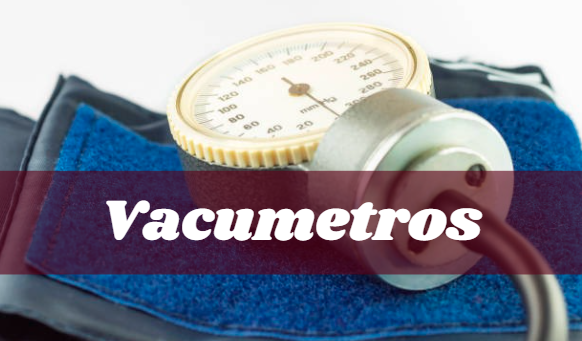Contents
- 1 Introduction to Vacumetros
- 2 The Importance of Vacumetros
- 3 Types of Vacumetros
- 4 Applications of Vacumetros
- 5 Choosing the Right Vacumetro
- 6 Advanced Features of Modern Vacumetros
- 7 Maintaining and Calibrating Vacumetros
- 8 Innovations in Vacumetro Technology
- 9 Frequently Asked Questions (FAQs) about Vacumetros
- 10 Conclusion
Introduction to Vacumetros
Vacumetros, commonly known as vacuum gauges, are essential instruments designed to measure and monitor the vacuum level within a closed system. These devices play a crucial role in various industrial, scientific, and commercial applications, where maintaining specific vacuum conditions is critical.
From automotive and HVAC systems to laboratory research and manufacturing processes, vacumetros ensure that systems operate efficiently and safely.
The Importance of Vacumetros
Ensuring Optimal Performance
Vacumetros are vital for ensuring the optimal performance of systems that rely on specific vacuum conditions. In the automotive industry, for instance, vacumetros are used to diagnose engine performance by measuring manifold vacuum, which helps in identifying issues like leaks or blockages in the intake system. Similarly, in HVAC systems, vacumetros monitor vacuum levels to ensure proper refrigerant flow and system efficiency.
Enhancing Safety
Maintaining the correct vacuum level is crucial for safety in various applications. In chemical processing and laboratory environments, an accurate vacuum measurement can prevent dangerous over-pressurization or implosion of equipment. Vacumetros provide real-time data, allowing operators to take corrective actions promptly and avoid potential hazards.
Improving Efficiency
Vacumetros contribute to the overall efficiency of systems by ensuring that they operate within the desired vacuum range. For example, in manufacturing processes that involve vacuum chambers, maintaining the correct vacuum level is essential for product quality and consistency. By using vacumetros, operators can optimize processes, reduce waste, and enhance productivity.
Types of Vacumetros
Mechanical Vacumetros
Mechanical vacumetros, also known as analog vacumetros, use physical components like springs, diaphragms, or Bourdon tubes to measure vacuum levels. These gauges provide a visual representation of the vacuum level through a dial or pointer. Mechanical vacumetros are known for their simplicity, durability, and reliability, making them suitable for various applications.
Bourdon Tube Vacumetros
Bourdon tube vacumetros are commonly used in industrial applications due to their robustness and accuracy. The Bourdon tube, a coiled, hollow tube, straightens when exposed to vacuum, causing the connected pointer to move and indicate the vacuum level on the dial.
Diaphragm Vacumetros
Diaphragm vacumetros use a flexible diaphragm that deflects under vacuum pressure. The deflection is mechanically linked to a pointer, providing a visual indication of the vacuum level. These gauges are often used in applications where sensitivity and precision are required.
Digital Vacumetros
Digital vacumetros use electronic sensors to measure vacuum levels and display the readings on a digital screen. These gauges offer higher precision, ease of reading, and advanced features like data logging and remote monitoring. Digital vacumetros are increasingly popular in scientific and industrial applications due to their accuracy and versatility.
Capacitance Manometers
Capacitance manometers measure vacuum by detecting changes in capacitance between a diaphragm and a fixed electrode. These vacumetros offer high accuracy and are widely used in semiconductor manufacturing and other high-precision applications.
Piezoelectric Vacumetros
Piezoelectric vacumetros utilize piezoelectric crystals that generate an electrical charge when subjected to vacuum pressure. The generated charge is proportional to the vacuum level, which is then displayed digitally. These vacumetros are known for their high sensitivity and rapid response times.
Vacuum Transducers
Vacuum transducers convert vacuum levels into electrical signals that can be read by a digital display or processed by a control system. These devices are essential in automated systems where continuous monitoring and control of vacuum levels are required. Vacuum transducers are commonly used in industrial automation, laboratory research, and HVAC systems.
Applications of Vacumetros
Automotive Industry
In the automotive industry, vacumetros are used to diagnose and monitor engine performance. By measuring the manifold vacuum, technicians can identify issues like vacuum leaks, clogged air filters, or malfunctioning EGR (Exhaust Gas Recirculation) valves. This helps in maintaining engine efficiency, reducing emissions, and improving fuel economy.
HVAC Systems
Vacumetros play a crucial role in HVAC (Heating, Ventilation, and Air Conditioning) systems by ensuring proper refrigerant flow and system efficiency. These gauges help technicians detect and fix issues like refrigerant leaks, blockages, or improper vacuum levels during system evacuation and recharging.
Laboratory Research
In laboratory environments, vacumetros are essential for experiments and processes that require specific vacuum conditions. These gauges are used in vacuum ovens, freeze dryers, and other equipment to ensure accurate vacuum levels, which are critical for reproducibility and reliability of results.
Manufacturing Processes
In manufacturing, vacumetros are used in processes like vacuum packaging, vacuum forming, and vacuum coating. These applications require precise vacuum levels to ensure product quality and consistency. Vacumetros help operators maintain optimal vacuum conditions, improving efficiency and reducing waste.
Chemical Processing
In chemical processing, maintaining the correct vacuum level is crucial for reactions, distillations, and other processes. Vacumetros provide real-time monitoring of vacuum levels, allowing operators to adjust conditions as needed to ensure safety and efficiency.
Choosing the Right Vacumetro
Accuracy and Precision
When selecting a vacumetro, accuracy and precision are critical factors to consider. The accuracy of a vacumetro indicates how close the measured value is to the actual vacuum level, while precision refers to the gauge’s ability to provide consistent readings. For high-precision applications, digital vacumetros with advanced sensors are recommended.
Measurement Range
The measurement range of a vacumetro should match the specific requirements of the application. Some vacumetros are designed for high vacuum applications, while others are suitable for low or medium vacuum levels. It’s essential to choose a vacumetro with an appropriate range to ensure accurate readings.
Durability and Reliability
The durability and reliability of a vacumetro are important, especially in harsh or demanding environments. Mechanical vacumetros are known for their robustness, while digital vacumetros offer advanced features but may be more sensitive to environmental factors. Consider the operating conditions and choose a vacumetro that can withstand the specific challenges of the application.
Ease of Use
Ease of use is another important consideration when selecting a vacumetro. Digital vacumetros offer the advantage of easy-to-read displays and advanced features like data logging and remote monitoring. However, mechanical vacumetros are straightforward and require minimal maintenance, making them a practical choice for many applications.
Cost
The cost of vacumetros can vary significantly based on their type, accuracy, and features. While digital vacumetros offer advanced capabilities, they may come at a higher price point. Mechanical vacumetros, on the other hand, are typically more affordable and provide reliable performance for basic applications. It’s essential to balance the cost with the specific needs and budget of the application.
Advanced Features of Modern Vacumetros
Data Logging
Many modern vacumetros come with data logging capabilities, allowing users to record vacuum levels over time. This feature is particularly useful for monitoring processes, identifying trends, and troubleshooting issues. Data logging can be done internally or through external devices connected to the vacumetro.
Remote Monitoring
Remote monitoring allows users to access vacuum level readings from a distance, providing greater flexibility and convenience. This feature is especially beneficial in large facilities or applications where direct access to the vacumetro is challenging. Remote monitoring can be achieved through wired or wireless connections, depending on the vacumetro model.
Alarm Systems
Some vacumetros are equipped with alarm systems that alert users when vacuum levels fall outside the desired range. These alarms can be visual, audible, or sent as notifications to remote devices. Alarm systems enhance safety and help prevent potential issues by providing timely warnings.
Integration with Control Systems
Advanced vacumetros can be integrated with control systems to automate processes and maintain optimal vacuum levels. This integration allows for real-time adjustments based on vacuum readings, improving efficiency and reducing the need for manual intervention. Integration can be achieved through various communication protocols, such as analog signals, digital outputs, or network interfaces.
Maintaining and Calibrating Vacumetros
Regular Maintenance
Regular maintenance is essential to ensure the accuracy and longevity of vacumetros. Mechanical vacumetros may require periodic cleaning and inspection of components like springs, diaphragms, or Bourdon tubes. Digital vacumetros should be checked for sensor integrity and electronic functionality. Following the manufacturer’s maintenance guidelines is crucial for optimal performance.
Calibration
Calibration is the process of adjusting a vacumetro to ensure its readings are accurate and consistent with a known standard. Regular calibration is essential for maintaining the reliability of vacumetros, especially in high-precision applications. Calibration can be performed by the manufacturer, third-party calibration services, or in-house using calibration standards and procedures.
Troubleshooting Common Issues
Common issues with vacumetros include inaccurate readings, mechanical failures, or electronic malfunctions. Troubleshooting these issues involves checking for leaks, inspecting components for damage, and verifying the calibration status. In some cases, professional repair or replacement may be necessary to restore functionality.
Innovations in Vacumetro Technology
Wireless Vacumetros
Wireless vacumetros represent a significant innovation in vacuum measurement technology. These devices offer the convenience of remote monitoring and data transmission without the need for physical connections. Wireless vacumetros are ideal for applications where mobility and flexibility are essential, such as field measurements or installations in challenging locations.
Smart Vacumetros
Smart vacumetros combine advanced sensors, data processing, and connectivity features to provide enhanced functionality and user experience. These devices can automatically adjust calibration, perform diagnostics, and integrate with IoT (Internet of Things) systems for comprehensive monitoring and control. Smart vacumetros are paving the way for more efficient and automated vacuum management.
Environmental Considerations
Environmental considerations are increasingly important in vacumetro design and usage. Manufacturers are focusing on developing eco-friendly vacumetros with lower energy consumption and reduced environmental impact. Additionally, proper disposal and recycling of vacumetros at the end of their lifecycle contribute to sustainable practices.
Frequently Asked Questions (FAQs) about Vacumetros
What is a vacumetro used for?
A vacumetro, or vacuum gauge, is used to measure and monitor the vacuum level within a closed system. It is essential for ensuring optimal performance, safety, and efficiency in various applications, including automotive diagnostics, HVAC systems, laboratory research, manufacturing processes, and chemical processing.
How do I choose the right vacumetro for my application?
Choosing the right vacumetro involves considering factors such as accuracy and precision, measurement range, durability and reliability, ease of use, and cost. It’s essential to match the vacumetro’s specifications with the specific requirements of your application.
How often should I calibrate my vacumetro?
The frequency of calibration depends on the vacumetro’s usage and the criticality of accurate readings in your application. Generally, it is recommended to calibrate vacumetros annually or more frequently if used in high-precision or safety-critical applications.
What are the advantages of digital vacumetros over mechanical vacumetros?
Digital vacumetros offer higher precision, ease of reading, and advanced features like data logging, remote monitoring, and integration with control systems. However, mechanical vacumetros are known for their simplicity, durability, and cost-effectiveness, making them suitable for many basic applications.
Can vacumetros be used in hazardous environments?
Yes, some vacumetros are designed for use in hazardous environments. These gauges are typically built to withstand harsh conditions and may have certifications for use in explosive or corrosive atmospheres. It’s essential to choose a vacumetro that meets the specific requirements of your environment.
Conclusion
Vacumetros are indispensable tools in various industries and applications, providing essential data for maintaining optimal performance, safety, and efficiency. By understanding the different types of vacumetros, their applications, and the factors to consider when choosing and maintaining them, users can ensure accurate vacuum measurements and enhance their processes.
As technology continues to evolve, innovations like wireless and smart vacumetros will further improve vacuum management, offering new possibilities for efficiency and automation.




